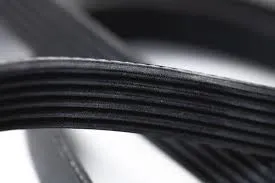- Arabic
- French
- Russian
- Spanish
- Portuguese
- Turkish
- Armenian
- English
- Albanian
- Amharic
- Azerbaijani
- Basque
- Belarusian
- Bengali
- Bosnian
- Bulgarian
- Catalan
- Cebuano
- Corsican
- Croatian
- Czech
- Danish
- Dutch
- Afrikaans
- Esperanto
- Estonian
- Finnish
- Frisian
- Galician
- Georgian
- German
- Greek
- Gujarati
- Haitian Creole
- hausa
- hawaiian
- Hebrew
- Hindi
- Miao
- Hungarian
- Icelandic
- igbo
- Indonesian
- irish
- Italian
- Japanese
- Javanese
- Kannada
- kazakh
- Khmer
- Rwandese
- Korean
- Kurdish
- Kyrgyz
- Lao
- Latin
- Latvian
- Lithuanian
- Luxembourgish
- Macedonian
- Malgashi
- Malay
- Malayalam
- Maltese
- Maori
- Marathi
- Mongolian
- Myanmar
- Nepali
- Norwegian
- Norwegian
- Occitan
- Pashto
- Persian
- Polish
- Punjabi
- Romanian
- Samoan
- Scottish Gaelic
- Serbian
- Sesotho
- Shona
- Sindhi
- Sinhala
- Slovak
- Slovenian
- Somali
- Sundanese
- Swahili
- Swedish
- Tagalog
- Tajik
- Tamil
- Tatar
- Telugu
- Thai
- Turkmen
- Ukrainian
- Urdu
- Uighur
- Uzbek
- Vietnamese
- Welsh
- Bantu
- Yiddish
- Yoruba
- Zulu
Des . 03, 2024 10:32 Back to list
single sided timing belt
Understanding Single-Sided Timing Belts Essential Components for Precision Engineering
In the realm of mechanical engineering, timing belts play a critical role in the efficient functioning of various machines and systems. Among the different types of timing belts, single-sided timing belts stand out for their unique design and practical applications. This article delves into the intricacies of single-sided timing belts, exploring their construction, advantages, and various applications.
What is a Single-Sided Timing Belt?
A single-sided timing belt is a type of synchronous belt designed with teeth on only one side. Unlike double-sided timing belts, which feature teeth on both sides, single-sided belts engage with a singular pulley system. This design allows for effective transfer of motion and power in a straightforward application. Single-sided timing belts are typically made from durable materials such as neoprene, polyurethane, or rubber, often reinforced with fiberglass or steel for added strength and longevity.
Advantages of Single-Sided Timing Belts
1. Space Efficiency One of the most significant benefits of single-sided timing belts is their compact design. By utilizing a single side for engagement, these belts can save space in machines where every inch counts. This efficiency is particularly valuable in applications with strict dimensional constraints.
2. Simplicity in Design The uncomplicated nature of single-sided timing belts allows for more straightforward assembly and maintenance. With fewer components to manage, engineers can design systems that are easier to troubleshoot and repair.
3. Cost-Effectiveness Single-sided timing belts are often more economical than their double-sided counterparts. The reduced material requirements and simpler manufacturing processes result in lower production costs, which can translate to savings for companies and consumers alike.
4. Versatile Applications These belts are used in a variety of applications, ranging from automotive engines to conveyor systems. Their versatility makes them suitable for different industries, including manufacturing, robotics, and packaging.
single sided timing belt

Applications of Single-Sided Timing Belts
Single-sided timing belts find extensive use across numerous sectors due to their reliability and efficiency. Some common applications include
1. Automobiles In automotive engineering, single-sided timing belts are commonly used to synchronize the rotation of the crankshaft and camshaft. This synchronization is crucial for maintaining the timing of engine operations, ensuring optimal performance and fuel efficiency.
2. Industrial Machinery Single-sided belts are prevalent in various industrial applications, where they drive conveyor systems, gear trains, and automated machinery. Their ability to maintain precise timing and transmit motion without slipping makes them ideal for these settings.
3. Robotics In robotic systems, single-sided timing belts are employed to control the movement of actuators and robotic arms. Their reliable performance is essential for achieving the high levels of precision required in automation.
4. Medical Equipment Many medical devices, such as MRI machines and surgical robots, utilize single-sided timing belts to ensure smooth and accurate operation. The reliability of these belts is vital in environments where precision is critical.
Conclusion
Single-sided timing belts are essential components with a wide range of applications across various industries. Their compact design, cost-effectiveness, and versatility make them a preferred choice for engineers and designers looking for reliable solutions. As technology continues to advance, the demand for efficient mechanical systems will likely propel further innovations in timing belt design, including enhancements in single-sided belts. Understanding these components and their applications is crucial for anyone involved in mechanical engineering, as they symbolize the intersection of functionality and design in modern machinery.
-
Korean Auto Parts Timing Belt 24312-37500 For Hyundai/Kia
NewsMar.07,2025
-
7PK2300 90916-T2024 RIBBED BELT POLY V BELT PK BELT
NewsMar.07,2025
-
Chinese Auto Belt Factory 310-2M-22 For BMW/Mercedes-Benz
NewsMar.07,2025
-
Chinese Auto Belt Factory 310-2M-22 For BMW/Mercedes-Benz
NewsMar.07,2025
-
90916-02660 PK Belt 6PK1680 For Toyota
NewsMar.07,2025
-
drive belt serpentine belt
NewsMar.07,2025

